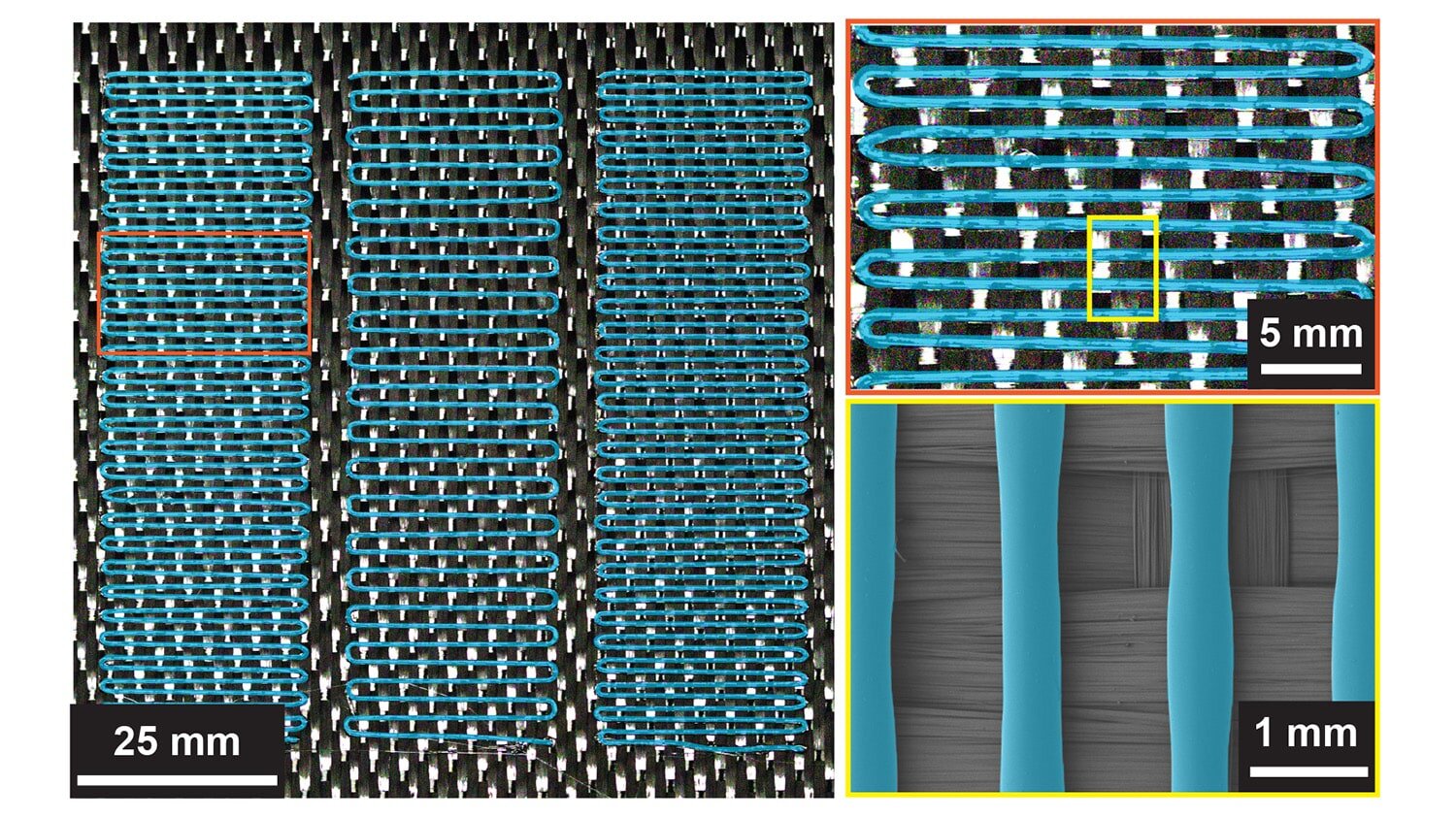New technology solves long-standing problems for self-healing materials

3D printed thermoplastic on carbon fiber reinforcement. credit: Communications of nature (2022). DOI: 10.1038/s41467-022-33936-z
Engineering researchers have developed a new self-healing composite that allows structures to self-repair in place, without the need for decommissioning. This cutting-edge technology solves two long-standing problems with self-healing materials and could significantly extend the life of structural components such as wind turbine blades and airplane wings.
“Researchers have developed many self-healing materialsbut previous strategies for self recovery composites faced two practical challenges,” says Jason Patrick, corresponding author of the research paper and associate professor of civil, structural and environmental engineering at North Carolina State University.
“First, materials often need to be decommissioned to recover. For example, some require heating in a furnace, which cannot be done for large components or while a particular part is in use.”
“Secondly, self-healing only works for a limited period. For example, a material can be regenerated several times, after which its self-healing properties will be significantly reduced. We have come up with an approach that addresses both of these challenges in a significant way while maintaining the strength and other performance characteristics of structural fiber composites.”
In practice, this means that users can rely on a given structural component, such as a wind turbine blade, for a much longer period of time without worrying about failure.
“By increasing the durability of these composites, we’re making them more sustainable,” says Patrick. “And while wind turbine blades are a good example, structural composites are found in a wide variety of applications: airplane wingssatellites, automotive components, sporting goods, whatever.”
Here’s how a new, self-healing fiber reinforced composite is working
Laminated composites are made from layers of fibrous reinforcements, such as glass and carbon fiber, bonded together. Damage most often occurs when the “glue” that holds these layers together begins to peel away from the rebar or peel away.
The research team solved this problem by 3D printing a sample of a thermoplastic healer onto a reinforcing material. The researchers also embedded thin layers of “heater” into the composite. If an electric current is applied, the insulation layers are heated. This, in turn, is a melting healing agent that gets into any cracks or micro-cracks within the composite and repairs them.
“We found that this process can be repeated at least 100 times while maintaining the efficiency of self-healing,” says Patrick. “We don’t know what the upper limit is, if there is one.”
The printed thermoplastic also increases the inherent fracture toughness by up to 500%, which means more energy is required to cause delamination in the first place. In addition, the treatment and insulation layers are made from readily available materials and are relatively inexpensive.
“Although the composites that incorporate our design will be slightly more expensive to manufacture, the cost will be more than offset by the significant increase in material life,” says Patrick.
Another benefit of the new technology is that internal heating elements, if built into aircraft wings, would allow airlines to stop using chemicals to de-ice wings while the plane is on the ground and to de-ice in flight.
“We have demonstrated that this multifunctional technology works,” says Patrick. “We are now looking for government and industry partners to help us adapt these polymer-based composites for use in specific areas.”
The document was published in Communications of nature.
Alexander D. Snyder et al., Sustained In Situ Self-Healing in Structural Composites via Thermal Reversible Bonding, Communications of nature (2022). DOI: 10.1038/s41467-022-33936-z
Provided
North Carolina State University
Citation: New technology solves longstanding problems of self-healing materials (2022, October 31) Retrieved October 31, 2022, from https://techxplore.com/news/2022-10-tech-longstanding-self-healing-materials.html
This document is subject to copyright. Except in good faith for the purpose of private study or research, no part may be reproduced without written permission. The content is provided for informational purposes only.
https://techxplore.com/news/2022-10-tech-longstanding-self-healing-materials.html




